Research on Factors Influencing Indoor PM2.5 Concentration in Curling Venues Based on CFD Simulation
Abstract
:1. Introduction
2. Methodology
2.1. Establishment of Simulation Model
- (1)
- The indoor supply air volume and return air volume are stable values.
- (2)
- Not considering the indoor PM2.5 reduction rate.
- (3)
- Indoor PM2.5 is uniformly distributed.
- (4)
- Assuming that the indoor PM2.5 emission intensity is constant, and does not change over time.
- (5)
- Neglecting the dust generation in ventilation ducts and the PM2.5 deposition inside the ducts.
- (1)
- k equation:
- (2)
- ε equation:
2.2. Simulated Scenarios
2.3. Air Quality Standards
3. Data Analysis
3.1. Analysis of Simulation Results for the Four Scenarios
3.2. Simulation Accuracy Verification
4. Results and Discussion
4.1. Influence of Outdoor Weather Conditions
4.2. Influence of Venue Airtightness
4.3. Influence of Air Supply Methods in the Competition Area
5. Conclusions
- (1)
- The outdoor PM2.5 concentration significantly influenced the indoor PM2.5 concentration. When the outdoor PM2.5 concentration increased by 20 μg/m3, the indoor PM2.5 concentration increased by 6 μg/m3 on average. When the outdoor PM2.5 concentration reached 90 μg/m3, the indoor PM2.5 concentration exceeded the limit value of 25 μg/m3.
- (2)
- For ice sports venues with almost no natural ventilation, fresh air systems are key to ensuring indoor air quality.
- (3)
- When the airtightness of the venue was good, that is, the infiltration and ventilation frequency was 0.15 times/hour, the outdoor air quality had no significant impact on the average indoor PM2.5 concentration. With an increase in the infiltration air exchange time, the PM2.5 concentration in all the regions increased. The temporary area on the eastern side was the most affected area. Compared with a ventilation rate of 0.15 times/h, the PM2.5 concentration in the competition area at a ventilation rate of 0.75 times/h increased by 55 times, whereas that in the audience area had the least influence, only increasing by 21%.
- (4)
- The air supply system at the end of the air conditioner in the competition area adopted the cloth bag duct air supply mode. Compared with the ground air supply mode, the fresh air from the air conditioner could directly reach the area near the ice surface, and the air supply volume could be appropriately increased, decreasing the PM2.5 concentration in the competition area by 93%.
- (5)
- Measures for improving the air quality of curling venues are as follows.
Author Contributions
Funding
Institutional Review Board Statement
Informed Consent Statement
Data Availability Statement
Acknowledgments
Conflicts of Interest
References
- Wang, Z.; Zhang, J.; Jin, C. The PM2.5 Concentration in the Indoor and Outdoor Air of Residences during Heavy Pollution in Beijing. Sci. Technol. Eng. 2019, 5, 312–318. (In Chinese) [Google Scholar]
- Ding, Y.; Di, Y. The Analysis if Air Flow Indoor on the Influence Factor about the Thermal Comfort. Contam. Control. Air Cond. Technol. 2014, 20–24. (In Chinese) [Google Scholar]
- Lu, W.; Chen, J.; Feng, X.; Wei, W. The Influence of Indoor Air quality on the Athletic Ability of Male College Students. Sport Sci. Res. 2013, 2, 72–74+79. (In Chinese) [Google Scholar]
- Rundell, K.W. High Levels of Airborne Ultrafine and Fine Particulate Matter in Indoor Ice Arenas. Inhal. Toxicol. 2003, 15, 237–250. [Google Scholar] [CrossRef] [PubMed]
- Rundell, K.W. Pulmonary Function Decay In Women Ice Hockey Players: Is There a Relationship to Ice Rink Air Quality? Inhal. Toxicol. 2004, 16, 117–123. [Google Scholar] [CrossRef] [PubMed]
- Stathopouiou, O.I.; Assimakopoulos, V.D.; BFlocas, H.A.; Helmis, C. An experimental study of air quality inside large athletic halls. Build. Environ. 2008, 43, 834–848. [Google Scholar] [CrossRef]
- Toomla, S.; Lestinen, S.; Kilpeläinen, S.; Leppä, L.; Kosonen, R.; Kurnitski, J. Experimental investigation of air distribution and ventilation efficiency in an ice rink arena. Int. J. Vent. 2019, 18, 187–203. [Google Scholar] [CrossRef]
- Brągoszewska, E.; Palmowska, A.; Biedroń, I. Investigation of indoor air quality in the ventilated ice rink arena. Atmos. Pollut. Res. 2020, 11, 903–908. [Google Scholar] [CrossRef]
- Guo, N.; Shui, Q.B. Analysis and Improvement of Air Quality of Large Sports Stadiums of Gansu Province. Gansu Gaoshi Xuebao 2018, 23, 115–118. (In Chinese) [Google Scholar]
- Jia, W. Testing and Evaluation of Indoor Air Microbial Colony Count in College Sports Venues. Sports Sci. Technol. 2017, 38, 27–28. (In Chinese) [Google Scholar]
- Yin, D.; Shi, B. Air quality analysis of gymnasium in elementary and secondary schools in Yinchuan. Sch. Health China 2017, 38, 1700–1703. (In Chinese) [Google Scholar]
- Ning, X.; Shen, H.; Liang, B. Analysis and countermeasures of indoor Air quality in Nanning Badminton Hall. Contemp. Sports Sci. Technol. 2016, 6, 131–132. (In Chinese) [Google Scholar]
- Xu, X. Study on Indoor Air Quality of Hubei Province Badminton Hall. Master’s Thesis, Wuhan Sports University, Wuhan, China, 2015. (In Chinese). [Google Scholar]
- Zhang, D.; Zhang, Y. Investigation and Analysis on Air Quality of Indoor Sports Environment of Colleges and Universities. J. Beijing Sport Univ. 2012, 35, 103–107. (In Chinese) [Google Scholar]
- Wang, G.; Guan, Y. The Study of Gym Microorganism Environment Safety at Harbin Institute of Technology. J. Harbin Inst. Phys. Educ. 2012, 30, 107–110. (In Chinese) [Google Scholar]
- Du, X.; Li, J. Indoor PM2.5 concentration test and analysis in Winter Olympics ‘Ice Cube’ curling venue. Energy Build. 2022, 258, 111837. [Google Scholar] [CrossRef]
- Du, X. Measurement and Analysis of PM2.5 Particle Concentration in Olympic Curling Stadium in Winter. Build. Energy Effic. 2020, 48, 144–149. (In Chinese) [Google Scholar]
- Zhang, Y.; Du, X. Indoor Air Quality Evaluation of Curling Arena Based on Occupants’ Perception. Build. Energy Effic. 2021, 49, 75–81. (In Chinese) [Google Scholar]
- Bellache, O.; Galanis, N.; Ouzzane, M.; Sunyé, R. Numerical Calculation of Air Velocity and Temperature in Ice Rinks. Proceedings eSim; Concordia University: Montreal, QC, Canada, 2002; pp. 84–91. [Google Scholar]
- Bellache, O.; Ouzzane, M.; Galanis, N. Numerical prediction of ventilation patterns and thermal processes in ice rinks. Build. Environ. 2005, 40, 417–426. [Google Scholar] [CrossRef]
- Omri, M.; Barrau, J.; Moreau, S.; Galanis, N. Three-dimensional transient heat transfer and airflow in an indoor ice rink with radiant heat sources. Build. Simul. 2016, 2, 175–182. [Google Scholar] [CrossRef]
- Palmowska, A.; Lipska, B. Research on improving thermal and humidity conditions in a ventilated ice rink arena using a validated CFD model. Int. J. Refrig. 2017, 86, 373–387. [Google Scholar] [CrossRef]
- Palmowska, A.; Lipska, B. Experimental study and numerical prediction of thermal and humidity conditions in the ventilated ice rink arena. Buildind Environ. 2018, 108, 171–182. [Google Scholar] [CrossRef]
- Kwon, Y.-I. A Study on Thermal Characteristics Affected by Air Distribution System Installed in Indoor Ice Rink Arena. Int. J. Air-Cond. Refrig. 2019, 1, 1950007. [Google Scholar] [CrossRef]
- Cheng, Z. Gymnasia Design Strategies Based on Natural Ventilation Simulation. Master’s Thesis, Harbin Institute of Technology, Harbin, China, 2017. (In Chinese). [Google Scholar]
- Wang, T. Natural Ventilation Design Strategy for Large Ball Games in National Fitness Centers. Master’s Thesis, Harbin Institute of Technology, Harbin, China, 2019. (In Chinese). [Google Scholar]
- Zhang, Z.; Huang, Y.; Cui, P.; Liu, Y.; Luo, Y. Effects of tree-canopy size and building height on ventilation and pollutant diffusion in street canyons. J. Univ. Shanghai Sci. Technol. 2022, 44, 269–280. (In Chinese) [Google Scholar]
- Huang, X.; Wang, H.; Cui, W.; Gao, L. Numerical simulation of the effects of temperature stratifications on airflow and pollutant dispersion in urban street canyons. Environ. Pollut. Control 2022, 4, 330–334. (In Chinese) [Google Scholar]
- Rufei, J. Relationship of Original Industrial Buildings Particulate Matter Concentration Levels Before and After the Industrial Remodeling; Chongqing University: Chongqing, China, 2014. [Google Scholar]
- Wang, H.; Duan, H.; Chen, A. Simulation of indoor PM2.5 and air distribution. J. Henan Univ. Eng. (Nat. Sci. Ed.) 2023, 35, 33–36. [Google Scholar]
- Liu, Y.; Liu, H.; Hong, G.; Liao, C. Simulation study on the importance of influencing factors of indoor PM2.5 spatial distribution. Build. Energy Environ. 2022, 41, 36–41. [Google Scholar]
- Yu, N. CFD Simulation and Study on Indoor Air Flow of a Gymnasium. Master’s Thesis, Tianjin University, Tianjin, China, 2012. (In Chinese). [Google Scholar]
- Fan, X.; Wang, H.; Hu, Y. Inverse Modeling of Indoor Airborne Contaminant Source Location Application of Coarse-grid Computation Fluid Dynamics. Fluid Mach. 2020, 7, 77–83. (In Chinese) [Google Scholar]
- Lin, J.; Liang, X. Simulation of Aircraft Cabin Thermal Comfort and Pollutants Concentration Distribution Based on CFD. Chin. Hydraul. Pneum. 2015, 12, 59–63. (In Chinese) [Google Scholar]
- Hou, X.; Wang, Y.; Liu, S.; Chen, X.; Zhang, X. CFD simulation and testing of unconventional pollutant emissions inside tractor cab. Trans. Chin. Soc. Agric. Eng. 2021, 24, 22–29. (In Chinese) [Google Scholar]
- Zhai, X. Experimental Research on Indoor Air Quality in Different Ventilation Modes of Residential Buildings in Xi’an. Master’s Thesis, Xi’an University of Architecture and Technology, Xi’an, China, 2021. (In Chinese). [Google Scholar]
- Li, G. The Indoor Air Quality Evaluation and Numerical Simulation of the Underground Supermarket. Master’s Thesis, Chongqing University, Chongqing, China, 2016. (In Chinese). [Google Scholar]
- Wu, R. Operation of UFAD System. Constr. Technol. 2019, 9, 34–37. (In Chinese) [Google Scholar]
- Li, G.; Li, W.; Li, M. Design and Engineering Application of Fabric-Duct Air-Dispersion System. Refrig. Air Cond. 2002, 6, 59–61. (In Chinese) [Google Scholar]
- Liu, C. A Comparative Study of Fiber Air Distribution System and Traditional Air Supply System. Master’s Thesis, Huazhong University of Science and Technology, Wuhan, China, 2019. (In Chinese). [Google Scholar]
- Liu, X.; Zhang, T.; Liang, M.; Liu, X.; Wei, Q. Literature review and energy consumption analysis of winter air infiltration in large space buildings. Heat. Vent. Air Conditioning. 2019, 8, 92–99. (In Chinese) [Google Scholar]
- World Health Organization. WHO Global Air Quality Guidelines. Available online: https://www.who.int/news/item/22-09-2021-new-who-global-air-quality-guidelines-aim-to-save-millions-of-lives-from-air-pollution (accessed on 1 January 2022).
- GB3095; Standardization Administration of China. China Standard: Beijing, China, 2012. (In Chinese)
- JGJ/T461; Design Standard for Indoor Air Quality Control in Public Buildings. China Standard: Beijing, China, 2019. (In Chinese)
- Manz, H.; Frank, T. Analysis of thermal comfort near cold vertical surfaces by means of computational fluid dynamics. Indoor Built Environ. 2004, 13, 233–242. [Google Scholar] [CrossRef]
- Moriasi, D.N.; Arnold, J.G.; van Liew, M.W.; Bingner, R.L.; Harmel, R.D.; Veith, T.L. Model evaluation guidelines for systematic quantification of accuracy in watershed simulations. Trans. ASABE 2007, 50, 885–900. [Google Scholar] [CrossRef]
- ASHRAE. ASHRAE Handbook: HVAC Applications; ASHRAE Inc.: Atlanta, GA, USA, 2019; Volume 46, p. 39. [Google Scholar]
- Zheng, F.; Sun, W.-H.; Feng, Z. National Aquatics Center (Icecube). Archit. Ski. 2021, 27, 8–13. (In Chinese) [Google Scholar]
- Zheng, F.; Zhu, B. National Speed Skating Hall and National Aquatics Center: Sustainability of new and renovated venues. Beijing Plan. Constr. 2021, 3, 146–152. (In Chinese) [Google Scholar]
- Zheng, F. Sustainable Strategy of Ice Venues for Winter Olympic Games Based on Renovation of Existing Buildings. Archit. J. 2019, 1, 43–47. (In Chinese) [Google Scholar]
- Zheng, F. The Programming and Design of Scenario Transformation in Sports Venues: The Cases of National Speed Skating Oval and National Aquatics Center. New Build. 2021, 3, 51–55. (In Chinese) [Google Scholar]
- Gu, M.; Guo, Q.; Lu, S.L. Feasibility analysis of energysaving potential of the underground ice rink using spectrum splitting sunshade technology. Renew. Energy 2022, 191, 571–579. [Google Scholar] [CrossRef]
- Lu, S.; Zeng, J.; Gu, M.; Zhang, C.; Shen, C. Research on the Energy-Saving Characteristics of the Ceiling of National Swimming Center under the Demand of Olympic Games. Archit. J. 2002, 2, 90–94. (In Chinese) [Google Scholar]

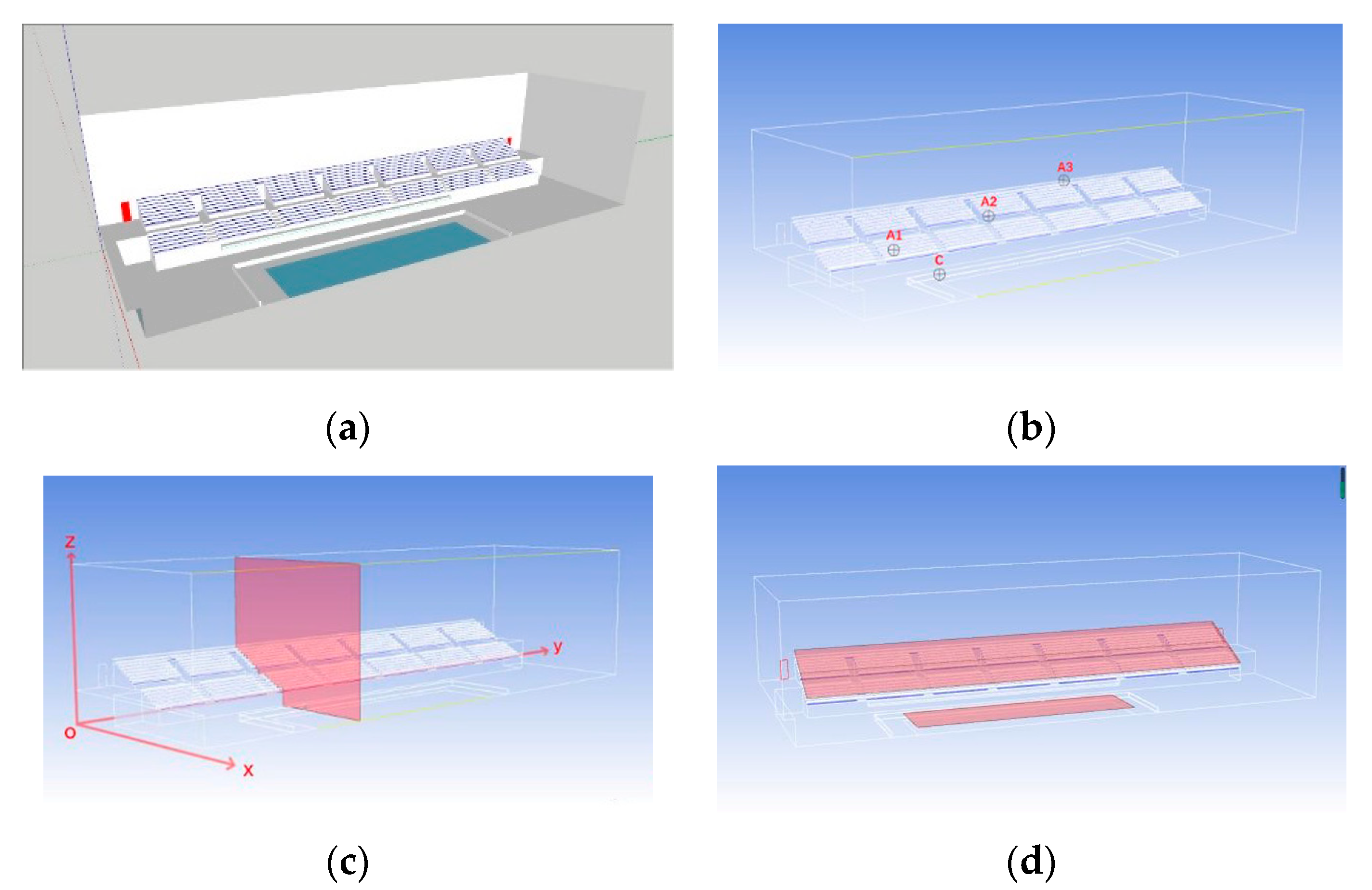

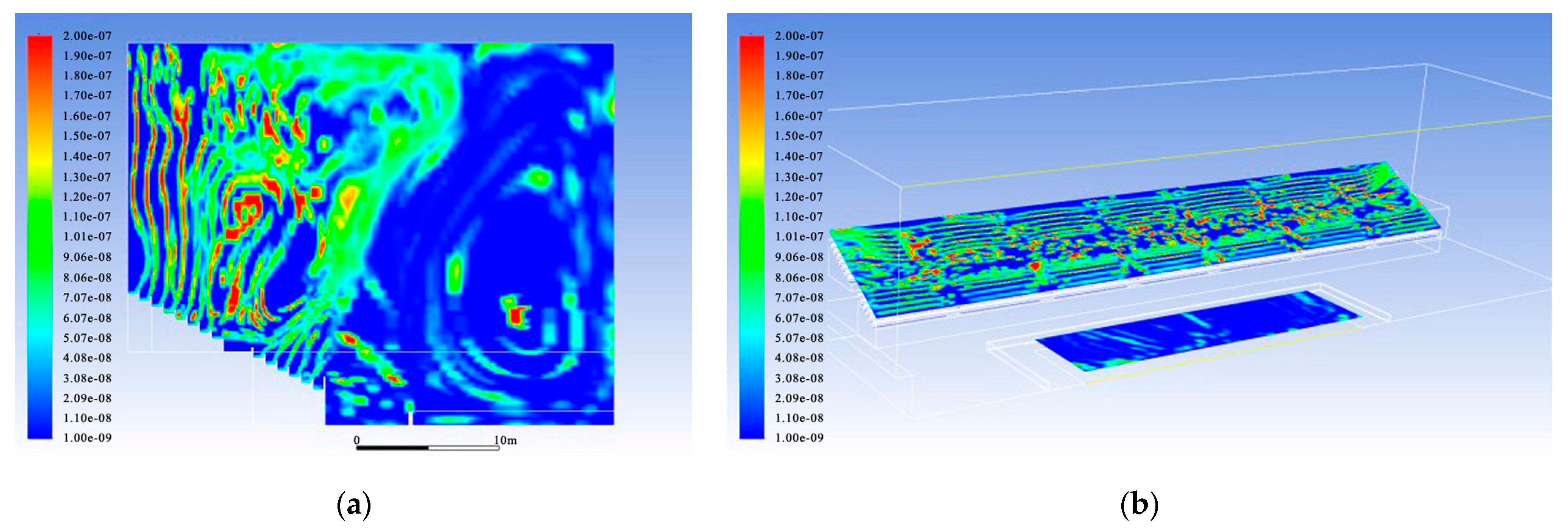
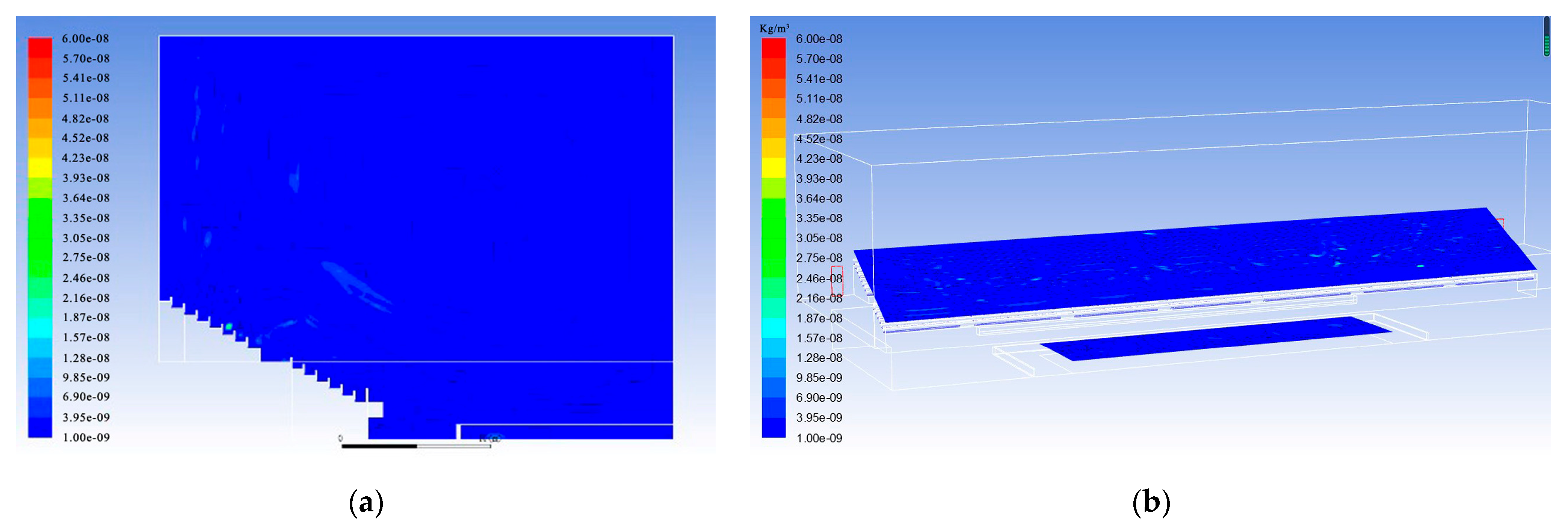


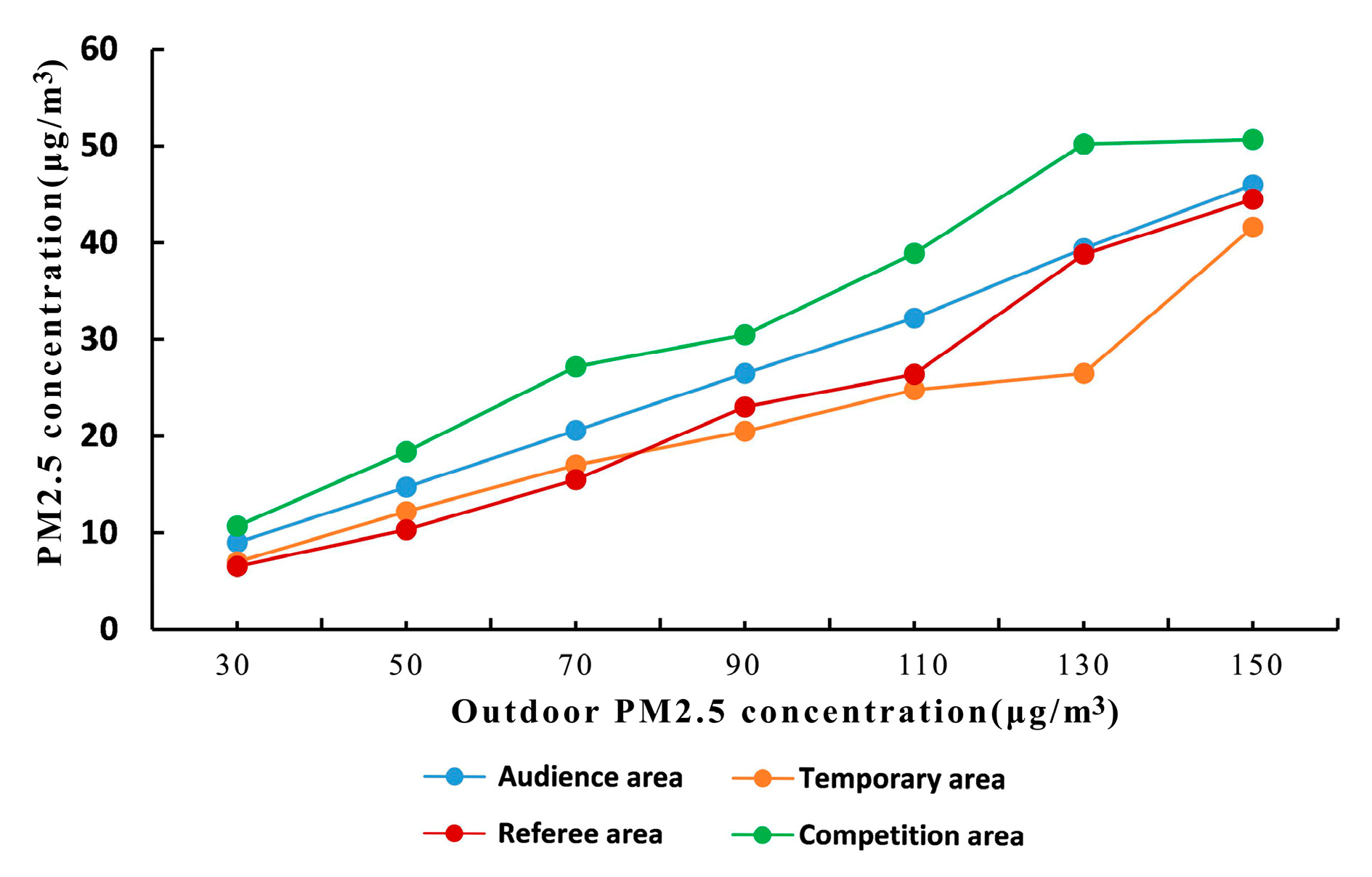
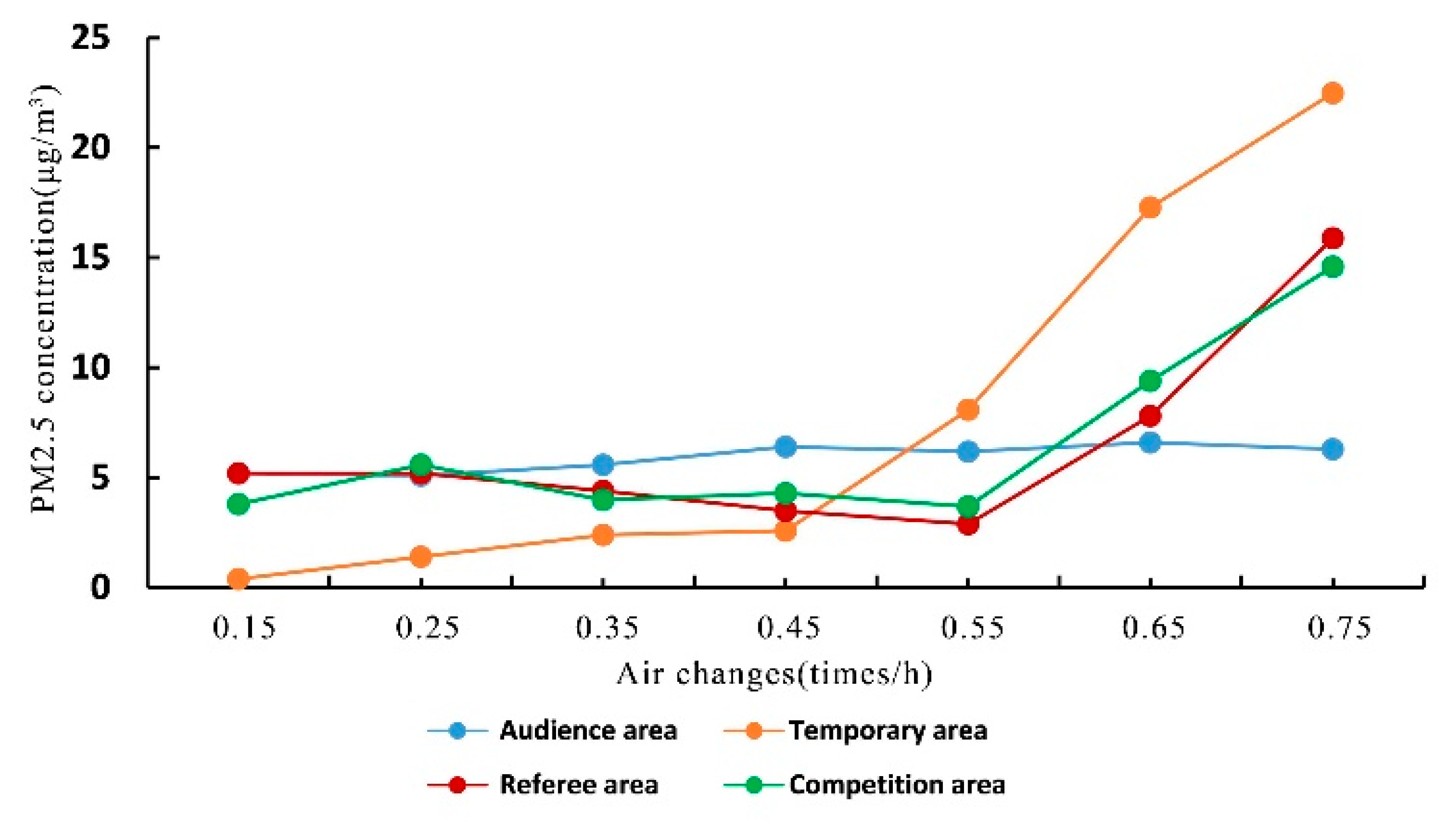

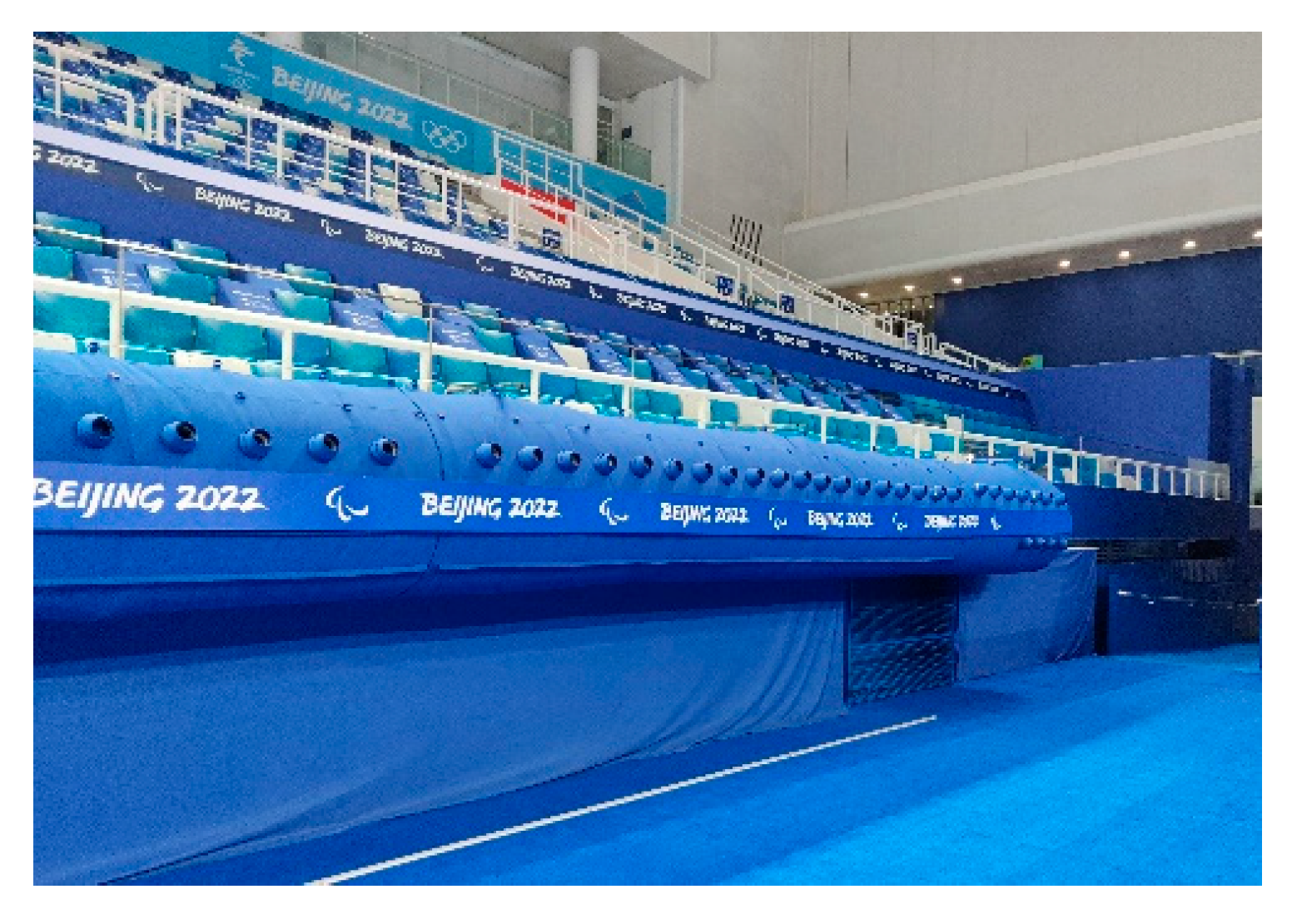
| Name | Boundary Type | Model Location | Parameter Settings |
|---|---|---|---|
| audience area | Temperature | at a height of 1.5 m from the ground | 16 °C |
| Relative humidity | 20% | ||
| Air velocity | 0.1 m/s | ||
| competition area | Temperature | at a height of 1.5 m from the ground | 10 °C |
| Relative humidity | 23% | ||
| Air velocity | 0.03 m/s | ||
| Ice surface | Heat exchange wall surface | Ice surface | The temperature is −8 °C. |
| Air supply port at the end of air conditioning in the competition area | Speed air inlet | The north and south sides of the ice surface | The dehumidification unit has a fresh air humidity of 1 g/kg, a temperature of 8 °C, and a fresh air volume of 2000 m3/H. |
| Venue air-returning outlet | Speed air inlet | The north and south sides of the ice surface | The wind speed of the air supply outlet at the end of the air conditioner is 0.5 m/s |
| Seat air outlet | Speed air inlet | Seat bottom | The fresh air temperature for seat supply is 20 °C, the wind speed is 0.3 m/s, and the moisture content is 5 g/kg |
| Human respiration | Speed air inlet | 0.75 m from the ground | Calculated based on the average adult exhaling 480 mL of air per second, with a moisture content of 20 g/kg, CO2 concentration of 44,000 PPM, and a temperature of approximately 30 °C, the audience will calculate based on the number of seats according to different situations |
| Name | Outdoor AQI | Outdoor PM2.5 Concentration (μg/m3) | Air Supply Method at the End of the Air Conditioning System in the Competition Area | Venue Airtightness |
|---|---|---|---|---|
| Scenario 1 | 66 | 50 | Ground air supply mode [38] | Poor |
| Scenario 2 | 181 | 140 | Ground air supply mode | Poor |
| Scenario 3 | 30 | 4 | Cloth bag duct air supply mode [39,40,41] | Good |
| Scenario 4 | 171 | 94 | Cloth bag duct air supply mode | Good |
| PM2.5 Concentration | ||||
|---|---|---|---|---|
| Scene 1 | Scene 2 | Scene 3 | Scene 4 | |
| MAE | 3 | 5.8 | 0.01 | 1.8 |
| MAPE | 23.10% | 24.90% | 0.30% | 24.10% |
| RMSE | 3.1 | 7.2 | 0.02 | 2 |
| SD/2 | 3.5 | 13 | 0.01 | 2 |
| Outdoor PM2.5 Concentrations | Y = 35 m Cross Section | The Section 1.5 m Away from the Ground |
|---|---|---|
| 30 μg/m3 |  |  |
| 70 μg/m3 | 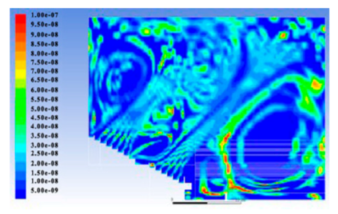 | 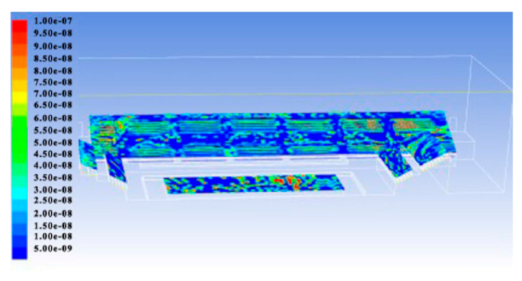 |
| 110 μg/m3 |  | 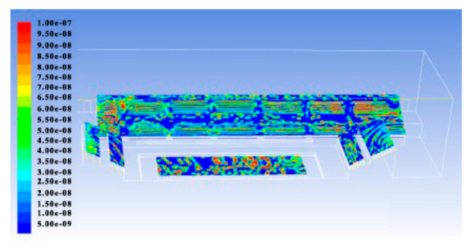 |
| Air Changes | Y = 35 m Cross Section | X = 30 m Cross Section |
|---|---|---|
| 0.15 times/h | 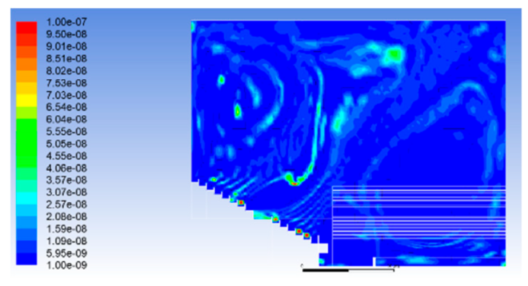 | 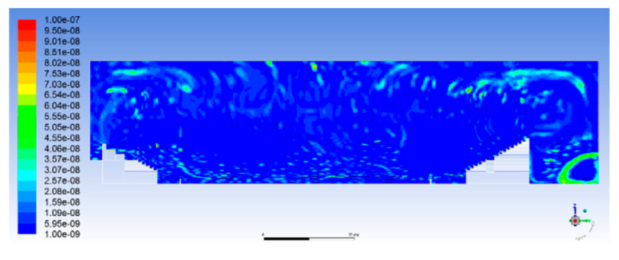 |
| 0.45 times/h | 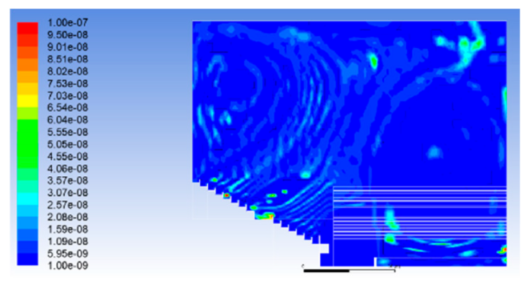 | 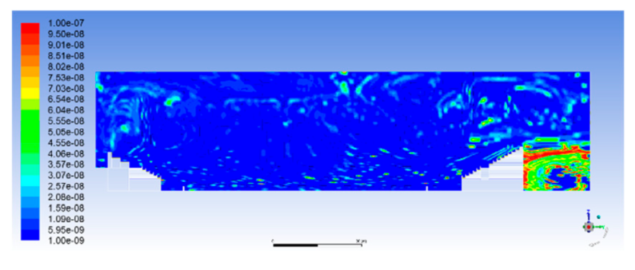 |
| 0.75 times/h |  | 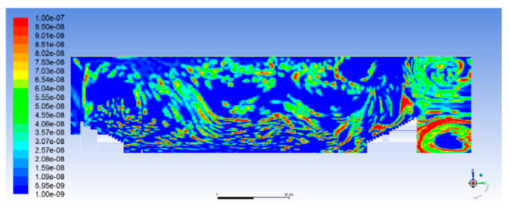 |
Disclaimer/Publisher’s Note: The statements, opinions and data contained in all publications are solely those of the individual author(s) and contributor(s) and not of MDPI and/or the editor(s). MDPI and/or the editor(s) disclaim responsibility for any injury to people or property resulting from any ideas, methods, instructions or products referred to in the content. |
© 2024 by the authors. Licensee MDPI, Basel, Switzerland. This article is an open access article distributed under the terms and conditions of the Creative Commons Attribution (CC BY) license (https://creativecommons.org/licenses/by/4.0/).
Share and Cite
Du, X.; Li, J.; Tang, Z.; Hu, S. Research on Factors Influencing Indoor PM2.5 Concentration in Curling Venues Based on CFD Simulation. Appl. Sci. 2024, 14, 3446. https://doi.org/10.3390/app14083446
Du X, Li J, Tang Z, Hu S. Research on Factors Influencing Indoor PM2.5 Concentration in Curling Venues Based on CFD Simulation. Applied Sciences. 2024; 14(8):3446. https://doi.org/10.3390/app14083446
Chicago/Turabian StyleDu, Xiaohui, Jiaxin Li, Ziying Tang, and Shijing Hu. 2024. "Research on Factors Influencing Indoor PM2.5 Concentration in Curling Venues Based on CFD Simulation" Applied Sciences 14, no. 8: 3446. https://doi.org/10.3390/app14083446
APA StyleDu, X., Li, J., Tang, Z., & Hu, S. (2024). Research on Factors Influencing Indoor PM2.5 Concentration in Curling Venues Based on CFD Simulation. Applied Sciences, 14(8), 3446. https://doi.org/10.3390/app14083446






